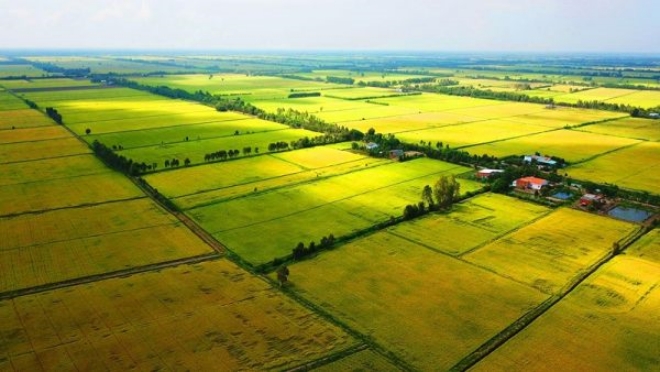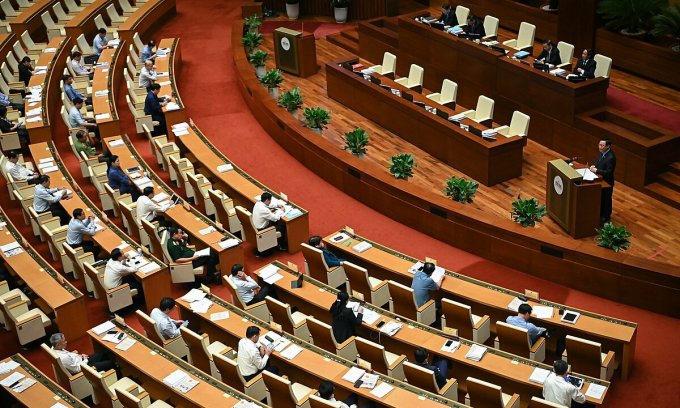Agricultural land tax under Vietnam law

Agricultural land is a very common type of land in our country. Every year, farmers have to pay land tax to the state. So about the matter “Agricultural land tax under Vietnam law” Let’s find out with LSX in the article below.
Legal grounds
- Land Law 2013
What is agricultural land?
According to Article 10 of the 2013 Land Law, based on the purpose of use, land is divided into 3 groups:
– Group of agricultural land.
– Group of non-agricultural land.
– Group of unused land.
Accordingly, the agricultural land group includes the following types of land:
– Land for annual crops, including land for rice cultivation and land for other annual crops.
– Land for perennial crops.
– Production forest land.
– Protection forest land.
– Special-use forest land.
– Aquaculture land.
– Salt land.
– Other agricultural land, including land used for construction of greenhouses and other houses for cultivation purposes, including forms of cultivation not directly on the land; building barns for raising cattle, poultry and other animals permitted by law; land for cultivation, animal husbandry and aquaculture for the purpose of study, research and experiment; nursery land for seedlings, seedlings and land for planting flowers and ornamental plants.
Agricultural land tax under Vietnam law
According to the provisions of Article 1 of the Law on Agricultural Land Use Tax 1993, it is stipulated as follows:
Organizations and individuals that use land for agricultural production must pay agricultural land use tax (collectively referred to as tax payers).
Households that are assigned the right to use agricultural land but do not use it still have to pay agricultural land use tax.
Thus, it can be understood that agricultural land tax is a tax collected on organizations and individuals that use agricultural land or are allocated agricultural land by the State for production. This is a compulsory fee that organizations and individuals must pay to the State when using agricultural land or being allocated agricultural land for production.
The characteristic of agricultural land tax is that it only collects the use or right to use the land, but does not collect any yield on the land. This is a highly social tax because the agricultural land use tax is calculated in rice, collected in cash. The taxable paddy price decided by the People’s Committees of the provinces and centrally-run cities may not be more than 10% lower than the local market price in the tax collection season. In special cases, the tax that can be collected in the form of rice shall be decided by the President of the People’s Committee of the province or city directly under the Central Government.
What type of agricultural land is subject to agricultural land use tax?
According to the provisions of Clause 1, Article 10 of the Land Law 2013, the group of agricultural land is as follows:
– The agricultural land group includes the following types of land:
• Land for annual crops, including land for rice and other annual crops;
• Land for perennial crops;
• Production forest land;
• Protection forest land;
• Special-use forest land;
• Aquaculture land;
• Land for salt production;
• Other agricultural land, including land used for the construction of greenhouses and other types of houses for cultivation purposes, including forms of cultivation not directly on the land; building barns for raising cattle, poultry and other animals permitted by law; land for cultivation, animal husbandry and aquaculture for the purpose of study, research and experiment; nursery land for seedlings, seedlings and land for planting flowers and ornamental plants.
– Land subject to agricultural land use tax is land used for agricultural production, including:
• Farmyard;
• Land with water surface for aquaculture;
• Planted forest land.
– Land not subject to agricultural land use tax but subject to other taxes or not subject to tax as prescribed by law, including:
• Land with natural forests;
• Natural pasture land;
• Land used for living;
• Specialized land.
Laws on tax declaration
– Organizations and individuals using agricultural land shall declare according to the tax calculation form of the tax office and send the declaration to the People’s Committee of the commune, ward or township within the prescribed time limit. When there is a change in the taxable area, the tax paying household must re-declare it to the People’s Committee of the commune, ward or township.
– In case the tax payer fails to declare or declares incorrectly, the tax authority is entitled to determine the payable tax amount after obtaining the written opinion of the People’s Committee of the same level on the area and class of land. tax.
How is the tax book made?
– Based on the declaration of the tax payer, the tax authority checks, calculates and makes a tax book. Being named in the tax book is the head of the household paying tax.
– Tax books are made according to administrative units at all levels. In which administrative unit the land is registered, tax shall be calculated and tax books shall be made in that administrative unit.
The People’s Committees of communes, wards and townships must publicly post up the annual tax amount of each tax paying household within 20 days before submitting the tax book for approval. The People’s Committees of communes, wards and townships certify the tax books before submitting them to the People’s Committees of districts, towns and provincial cities for consideration and approval.
– Tax books of communes, wards and townships must be considered and approved by the People’s Committees of districts, towns and provincial cities at the request of tax authorities of the same level.
Which cases are exempted or reduced?
According to the provisions of Chapter V on tax reduction and exemption of the Law on Agricultural Land Use Tax 1993, the following provisions are made:
– Tax exemption for bare hill and mountain land used for agricultural and forestry production, land for planting protection forests and special-use forests.
– Tax exemption for reclaimed land not specified in Clause 1 of this Article used for production:
• Annual tree planting: 5 years; especially for reclaimed land in mountainous areas, swamps and sea encroachment: 7 years;
• Planting perennial crops: tax exemption during the basic construction period plus 3 years from the time of harvest. Particularly for land in mountainous areas, swamps and sea encroachment, an additional 6 years will be added.
• For trees for timber and perennial plants harvested once, tax shall be paid only when exploited according to the provisions of Clause 4, Article 9 of this Law.
– Tax exemption for land for perennial crops to be replanted and land for annual crops to be converted to perennial crops and fruit trees: during the construction period and plus 3 years from the time of harvest.
– In case of natural disaster or enemy sabotage causing crop damage, agricultural land use tax may be reduced or exempted for each tax paying household according to each production season as follows:
• Damages from 10% to less than 20%, reduce tax corresponding to the level of damage;
• Damages from 20% to less than 30%, tax reduction of 60%;
• Damages from 30% to less than 40%, tax reduction 80%;
• Damage from 40% or more, 100% tax exempt.
In addition, tax exemption or reduction for farming households in highland, mountainous, border and island areas where production and living are still difficult. Tax exemption or tax reduction for ethnic minority farmers whose production and living are still difficult. Tax exemption for farmers who are disabled, old and helpless. Tax exemption for tax payers with class 1/4 and 2/4 wounded soldiers, 1/3 and 2/3 class sick soldiers. Tax exemption or reduction for tax payers who are martyrs’ families. Tax reduction for tax payers with war invalids and sick soldiers who are not exempt from tax as prescribed in Clause 1 of this Article and have many difficulties in life.
Services of LSX
Prestigious professional services: Firstly, the team of consultants and consultants for many years in the field of civil status, and customer support.
On-time: Certainly, with the motto “Get your lawyer right at your fingertips”, we ensure the service always performs on time. The rights and interests of customers always come first.
Cost: Besides, LSX’s service costs are highly competitive; depending on the nature of the particular case. So, we want our guests to have the best possible service experience. Therefore, costs which guaranteed to be the most suitable and economical for customers.
Confidentiality of client information: Finally, all brand information of client LSX will be 100% confidential.
Please contact us immediately if you have any questions about “Agricultural land tax under Vietnam law”
Contact LSX
Finally, hope this article is useful for you to answer the question about “Agricultural land tax under Vietnam law” If you need any further information, please contact LSX Law firm: at +84846175333 or Email: [email protected]
Please see more
- The case of tax-free land donation in Vietnam
- Sequence of recovering encroached land in Vietnam
- Land valuation income method in Vietnam
Frequently asked questions
+Area;
+Grade of land;
+The tax rate calculated in kilograms of rice per unit area of each class of land.
Area for calculation of agricultural land use tax is the area allocated to households to use land in accordance with the State cadastral book. If the cadastral book has not been established, the taxable area is the area recorded on the declaration of the land-using household.
This content is specified in Article 12 of Circular 153/2011/TT-BTC as follows:
“Article 12. Competence to decide on tax exemption or reduction.
The tax authorities directly manage, based on the tax declaration dossiers specified in Article 15 of this Circular to determine the amount of land use tax exempted or reduced, and decide on the exemption and reduction of the foreign land use tax for taxpayers according to the calculation period. tax.
Some specific cases are as follows:
a) In the case of exemption or reduction of SFE for households and individuals as prescribed in Clauses 4, 5, 6, Article 10 and Clauses 2 and 3, Article 11 of this Circular, the Director of the Tax Department’s Sub-Department promulgate a joint decision based on the list proposed by the commune-level People’s Committee.
Annually, the commune-level People’s Committees are responsible for reviewing and sending the list of subjects eligible for tax exemption and reduction according to regulations for tax authorities to implement tax exemption and reduction according to their competence.
b) In case of tax exemption or reduction as prescribed in Clause 9, Article 10 and Clause 4, Article 11 of this Circular, the head of the managing tax agency shall directly issue a decision based on the taxpayer’s application and certify of the People’s Committee of the commune where the damaged land is located.
c) In other cases, taxpayers must send dossiers, together with papers proving that they are eligible for land use tax exemption or reduction according to regulations, or certified by the People’s Committees of communes where the taxable land is located, to the tax authorities directly. manage to be resolved.”
Thus, for cases of tax exemption because the annual non-agricultural land use tax payable is fifty thousand dong or less, the taxpayer must send a dossier together with papers proving that it is eligible for exemption or reduction. tax or certified by the People’s Committee of the commune where the taxable land is located to the tax office.
Conclusion: So the above is Agricultural land tax under Vietnam law. Hopefully with this article can help you in life, please always follow and read our good articles on the website: lsxlawfirm.com




